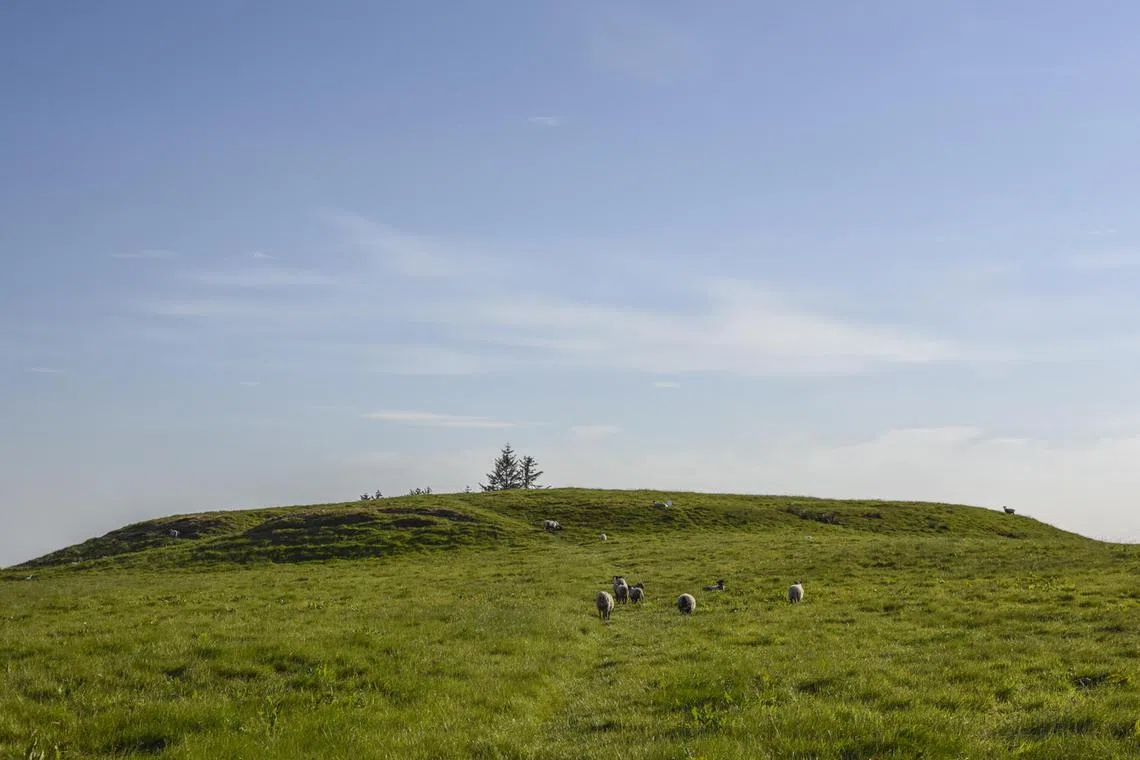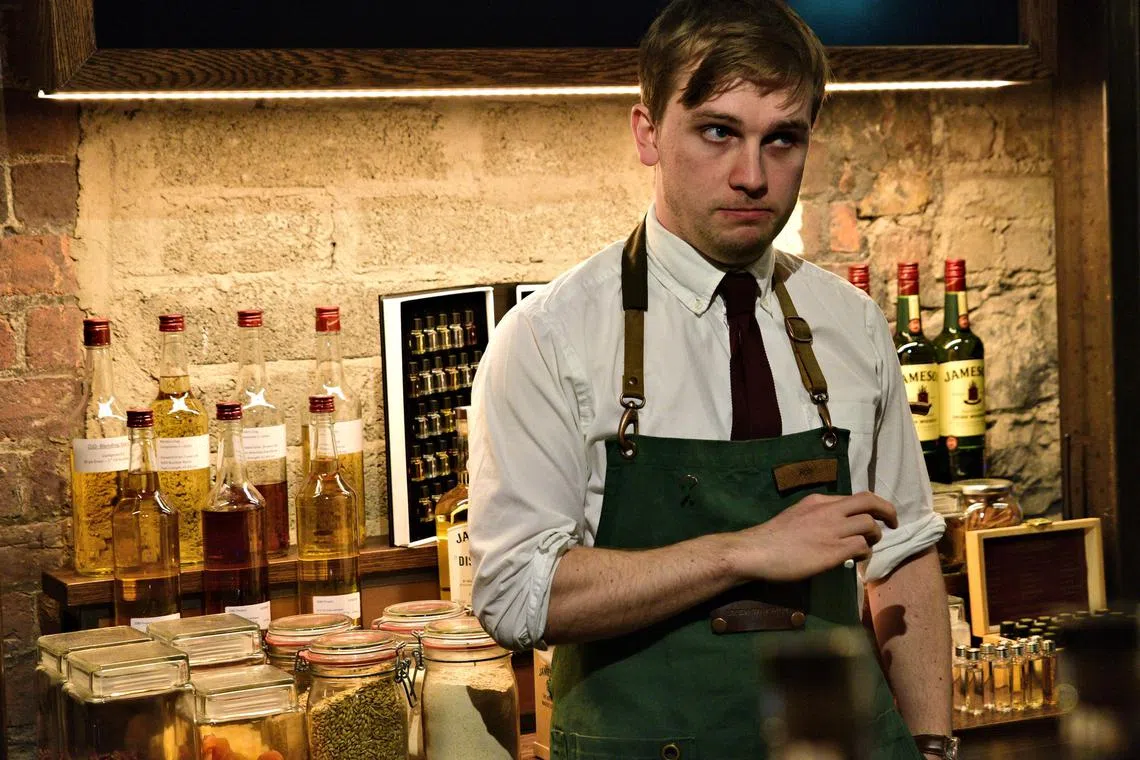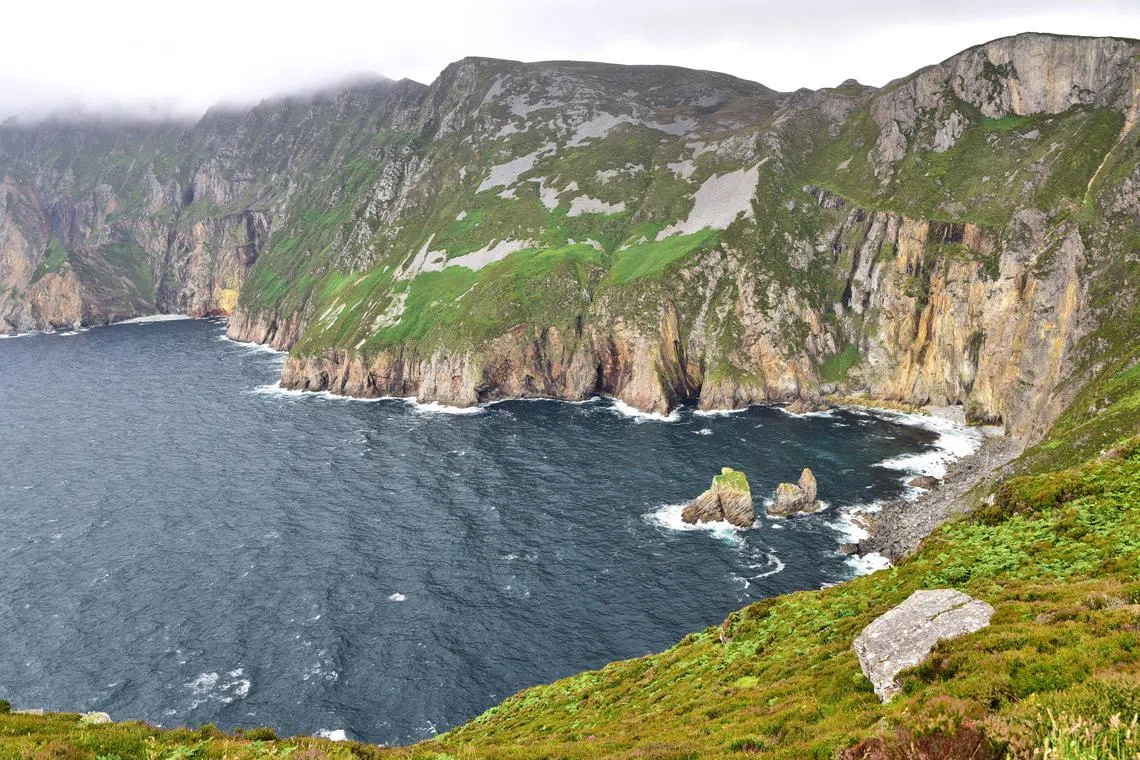In Quest Of: What the Irish love, from swooping falcons to new surfing spots
Sign up now: Get ST's newsletters delivered to your inbox

Slieve League has some of Europe’s highest sea cliffs.
PHOTO: RONAN O’CONNELL
Ronan O'Connell
Follow topic:
Falcons swoop, whiskeys blend, surfers glide, salmon leap and devils lurk in my ancestral homeland Ireland.
Here are six Irish experiences to make any visit a memorable memory.
1. Flying a bird of prey
I am eye to eye with Swift, a Harris hawk that is perched on my arm at Ashford Castle. In Ireland, flying birds of prey such as falcons and hawks has been a country sport for a thousand years.
Travellers can visit falconry schools across the country for short lessons, like I did at Ashford Castle, a five-star hotel with splendid gardens and woodlands on the banks of Lough Corrib, the second-largest lake in the country. Ireland’s School of Falconry is set amid this landscape.
My instructor Joe helps me slip a long leather glove over my left hand and arm, to prevent Swift’s talons from leaving permanent impressions.

Ashford Castle has a falconry school.
PHOTO: RONAN O’CONNELL
About 50cm tall and weighing 1kg, Swift stares at me for a while. Then on Joe’s instruction, she takes off, gliding between the trees. When Joe raises his hand, she swoops back down and lands on my wrist.
This thrilling experience is indulgently paired with high tea at the lavish dining room of the 800-year-old castle that once belonged to the Guinness family.
2. Home of Halloween

Rathcroghan is the former Irish royal settlement where Halloween was born.
PHOTO: RONAN O’CONNELL
Most people assume that Halloween is an American invention, since it is big in the United States. But Halloween was actually born “beneath” Ireland.
It can be traced back 2,000 years to the Irish pagan festival of Samhain. This was celebrated each year on Nov 1 when, as the ancient Irish believed, the gates to hell opened. The barrier separating the living and spirit worlds would dissolve that day.
Spirits would then enter the mortal world, emerging through the gates to hell. The most famous gate still sits in the middle of a field in County Roscommon. It is called Oweynagat Cave.
Under the supervision of a tour guide, visitors can slide down into this 37m-long cave to admire 1,500-year-old inscriptions.
At 197cm tall, I cannot fit easily through its narrow entrance. If you are also too big, or uncomfortable in tight spaces, just wander around Rathcroghan. This is Europe’s largest unexcavated royal site, and the hellhole Oweynagat is a part of it.
3. Ride Ireland’s new tourism wave

Ireland is one of the world’s emerging surf tourism locations.
PHOTO: RONAN O’CONNELL
Recently, surfers around the world were awed by video footage of a man riding one of the biggest waves in history. This was not filmed in Hawaii, Australia or Tahiti, but in Ireland, where surf tourism has started to take off.
That clip of Irishman Conor Maguire surfing an 18m wave, the height of a five-storey building, was captured at a wild location that I often visit to admire the power of the Atlantic Ocean.
A small farming community on a peninsula in the west of Ireland, Mullaghmore is among many increasingly popular surfing locations.
Ireland will soon open the National Surf Centre near Mullaghmore. It will have a virtual surfing experience and a museum that details the history of board-riding in the country.
4. Become a whiskey master

Learn to blend whiskey in Dublin.
PHOTO: RONAN O’CONNELL
“That’s whiskey spelled with an ‘e’,” Rob tells me from behind a long wooden bar at the Jameson Distillery in Dublin.
The young Irishman, who is teaching me to blend this potent alcohol, is alluding to the long-running debate about which country invented this brown spirit – Ireland or Scotland, where it is spelled “whisky”.
The Irish claim they began making whiskey in the early 1400s, almost a century before the Scots joined the party.
What is not in dispute is that Irish whiskey boomed after this Jameson Distillery opened in 1780. A century later, it had become one of the world’s most popular spirits, with Jameson being its most prolific brand.
Although this facility in downtown Dublin no longer distils whiskey – Jameson is now produced in County Cork – it has become a key attraction. Visitors can tour the old distillery, learning about the history of Irish whiskey and how it is made.
They can also pause at one of its bars for a glass of the strong stuff, or join the Whiskey Makers Experience workshop to learn how to blend two whiskeys to create a unique bottle of spirits to take home.
5. See the sea cliffs

Slieve League has some of Europe’s highest sea cliffs.
PHOTO: RONAN O’CONNELL
Even from 500m above its surface, the Atlantic Ocean is intimidating, its vastness enveloping my field of vision and the sound of its ferocious waves rumbling in my ears. I am standing near the crest of Slieve League, which has some of Europe’s highest sea cliffs.
This natural wonder in County Donegal, in Ireland’s north-west, is now an even better attraction, thanks to a recently completed $7 million project. That includes 1.6km of new paths which you can follow up to the top of Slieve League, and the visitor centre where a cafe offers striking vistas.
While that is my favourite coastal location in Ireland, it is not nearly as famous as the Cliffs of Moher, 190km to the south, in County Clare. This series of sheer rock surfaces, which tumble into the Atlantic, is Ireland’s second-most visited attraction after Dublin’s Guinness Storehouse.
If you arrive in summer, dodge the crowds by showing up in the early morning or after 7pm to take advantage of Ireland’s long days.
Like at Slieve League, you can tread narrow paths along these 214m-high cliffs. But do not get too close to the edge in search of the perfect photo, as several tourists have fallen to their death here in recent years.
6. Fish for wild salmon

The River Moy in Mayo is rich with wild salmon.
PHOTO: RONAN O’CONNELL
He felled a giant, created islands, built roads across oceans, shaped Irish mythology for centuries, and is now hibernating in a cave waiting to emerge and save Ireland when it needs him most.
None of these extraordinary feats would have been achieved by Ireland’s mythical character Finn McCool, if not for the country’s most famous fish species.
For 5,000 years, the Irish have loved salmon. It dominates their cuisine, is a common symbol in folklore and attracts people around the world who come to fish for wild salmon in pristine rivers.
In the 1,800-year-old story of McCool, he was a young boy when he caught a magical speckled salmon, which made him Ireland’s wisest and most powerful man.
Do not expect a similar transformation if you catch or eat Irish salmon. But my wife, a seafood connoisseur born and raised in Thailand, swears this is the finest fish on the planet, and we gorge on it each time we visit my family in Ireland.
Visitors can apply online for an Irish fishing licence and cast their lines at renowned salmon locations such as the River Moy in County Mayo.
Ronan O’Connell is an Australian journalist who has Irish citizenship, thanks to his Irish parents. He has spent the last 10 years living on and off in Ireland, his spiritual home.
In Quest Of is a series on the joy of niche exploration amid the resurgence of international travel.

